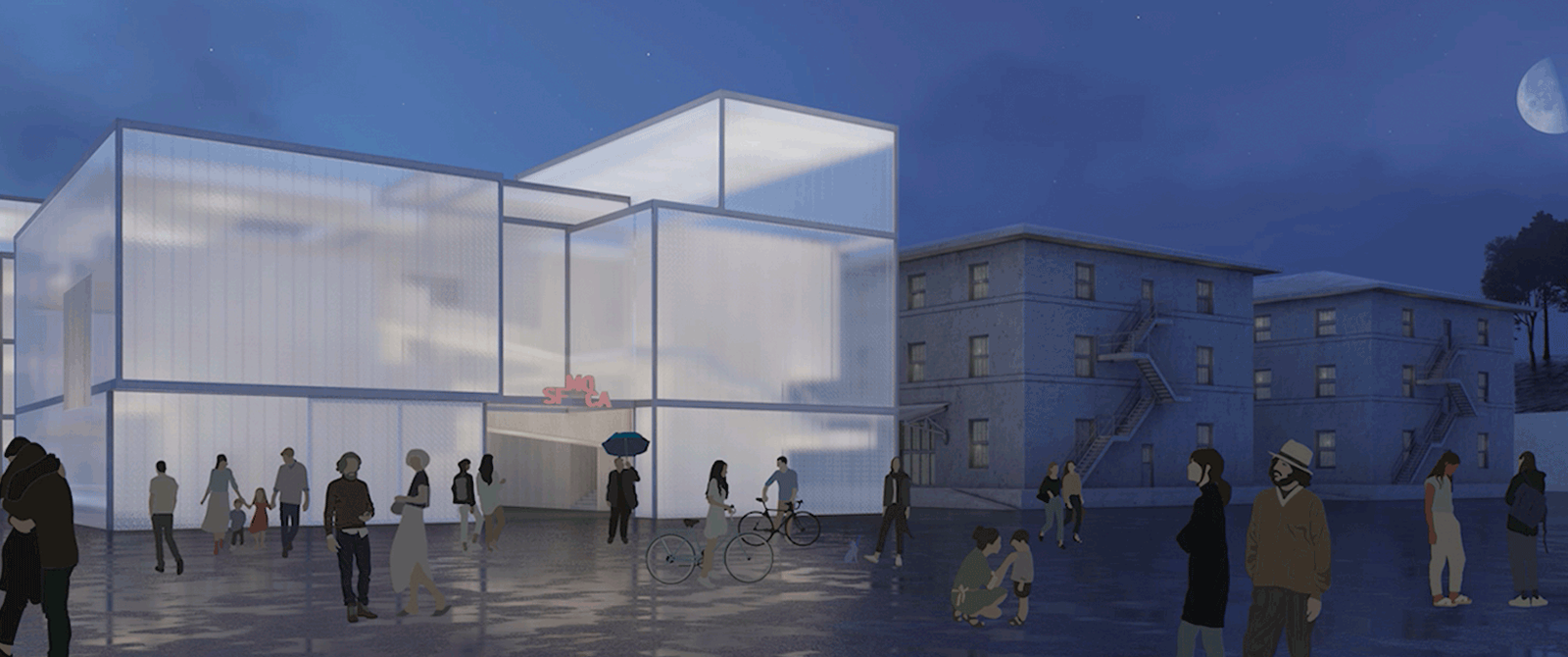
Architecture
Architecture students at California College of the Arts are challenged to be creative and visionary. Across four academic programs and four research and teaching labs, they design with aesthetic, social, and environmental issues in mind, producing work that links image to identity, form to performance, and order to equity.
Overview
Embrace innovative thinking and making
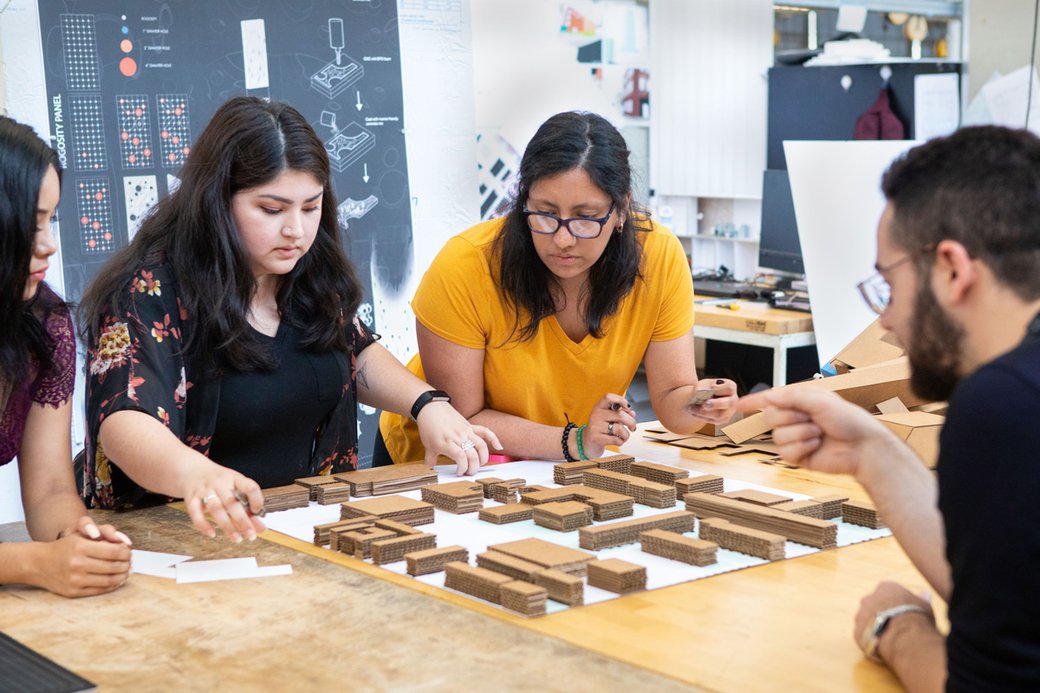
Design better futures
We believe that architecture and interior design are critical cultural practices that can and should serve the common good. Architecture at CCA is an arena for the free and open exchange of ideas about the future—of our buildings, cities, and planet—and a laboratory where these ideas are tested through speculative architectural research. Our students challenge conventional ideas at every turn in an innovative culture of making that weds discipline-specific skills and knowledge to emerging technical and conceptual methods.
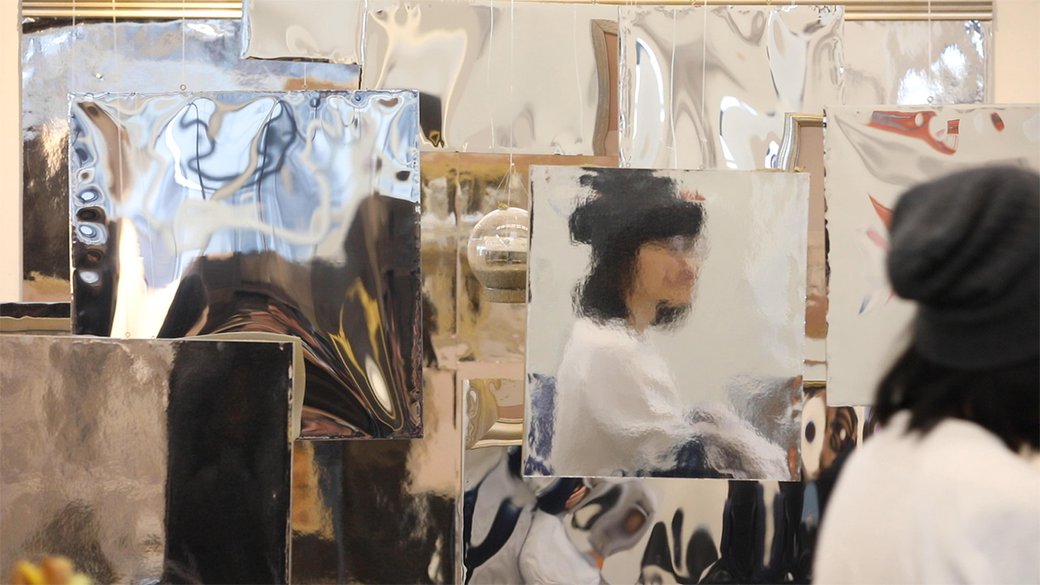
With each passing semester, you’ll increasingly see yourself as a designer actively engaged in the most important issues of the day, becoming ever more confident as your knowledge base grows, your skills sharpen, and your ability to identify, develop, and communicate your ideas matures. Guided by a faculty with practice-based expertise—ranging from experimental history and leading-edge digital fabrication to fresh urban form-making, novel representational methods, and down-and-dirty design/build—you’ll transform theory into action as you produce new disciplinary knowledge and discover career opportunities that value design speculation and versatile leadership.
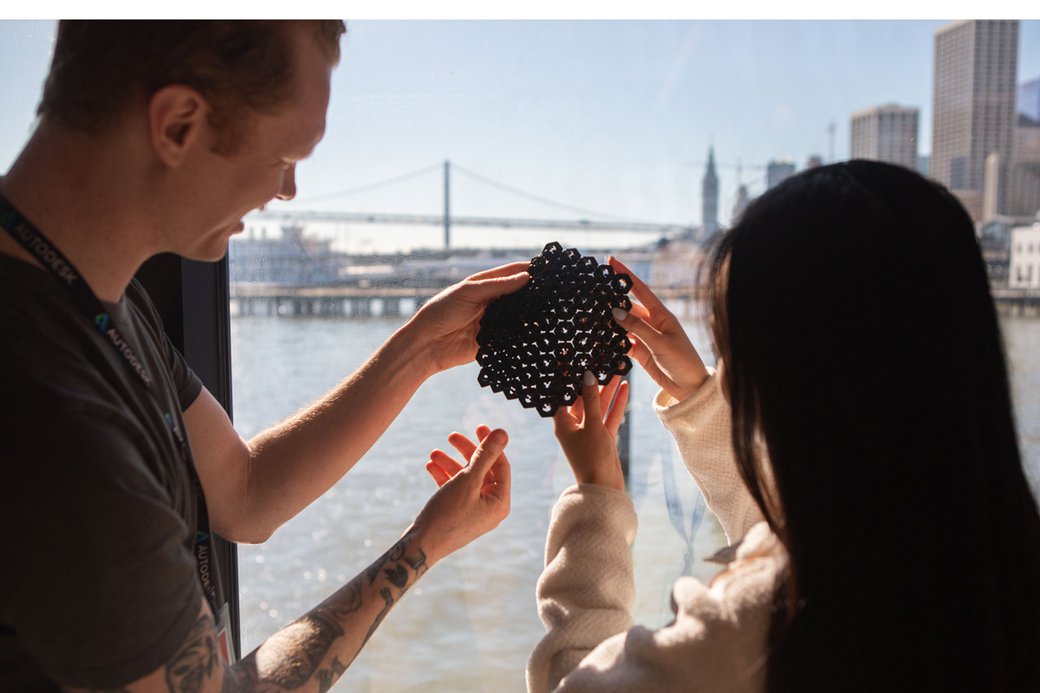
The city is your urban laboratory
Central to your experience at CCA is our San Francisco location: a place where the leading edge of digital culture meets an enduring legacy of social and environmental action. Here, new ideas about how we inhabit this planet are continually being tested. You’ll study in a world-class, top art and design college that values interdisciplinary exchange and open dialogue.
Creating opportunities for excellence
We are stewarding our discipline toward a more sustainable and inclusive future for everyone. With the generous support of the Gensler family and the award-winning Gensler firm, and in honor of the late former board chair, we’ve established the M. Arthur Gensler Jr. Center for Design Excellence, a dedicated academic and professional initiative that advocates for diversity and social justice within the field, supports forward-looking design research and practices, and connects students with leading professionals in the field. Through scholarships, mentorships, and tailored curricular engagements, you’ll connect with industry leaders, discover-cutting edge faculty research, and find inspiring opportunities to construct your career in shaping the future of the built environment.
The M. Arthur Gensler Jr. Center for Design Excellence was created through the generosity of the Gensler Family and the Gensler firm to celebrate the life and legacy of visionary architect, entrepreneur, and philanthropist Art Gensler.
Community
Fundamentally collaborative
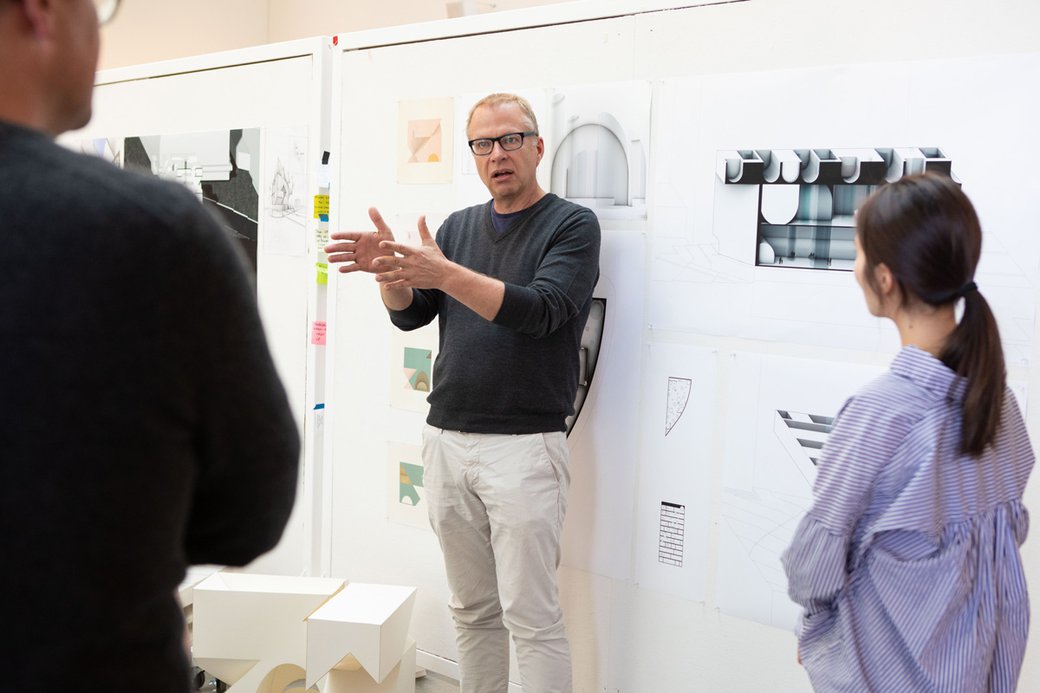
Meet the dean of Architecture
Dean Keith Krumwiede is an award-winning educator and the author of Atlas of Another America: An Architectural Fiction, a satirical assessment of the American Dream. Named “Book of the Year” by critics Alexandra Lange and Mark Lamster, Atlas of Another America reflects Krumwiede’s multifaceted and humorous approach to the culture of architecture and its often-complicit relationship to power and privilege. His work has been exhibited globally at renowned architecture biennials, universities, and galleries. A thought-leading researcher, Krumwiede’s scholarly articles have appeared in The Architect’s Newspaper, Praxis, Domus, and elsewhere. Prior to joining CCA in fall 2018, he was an Arnold W. Brunner/Katherine Edwards Gordon Rome Prize Fellow in Architecture.
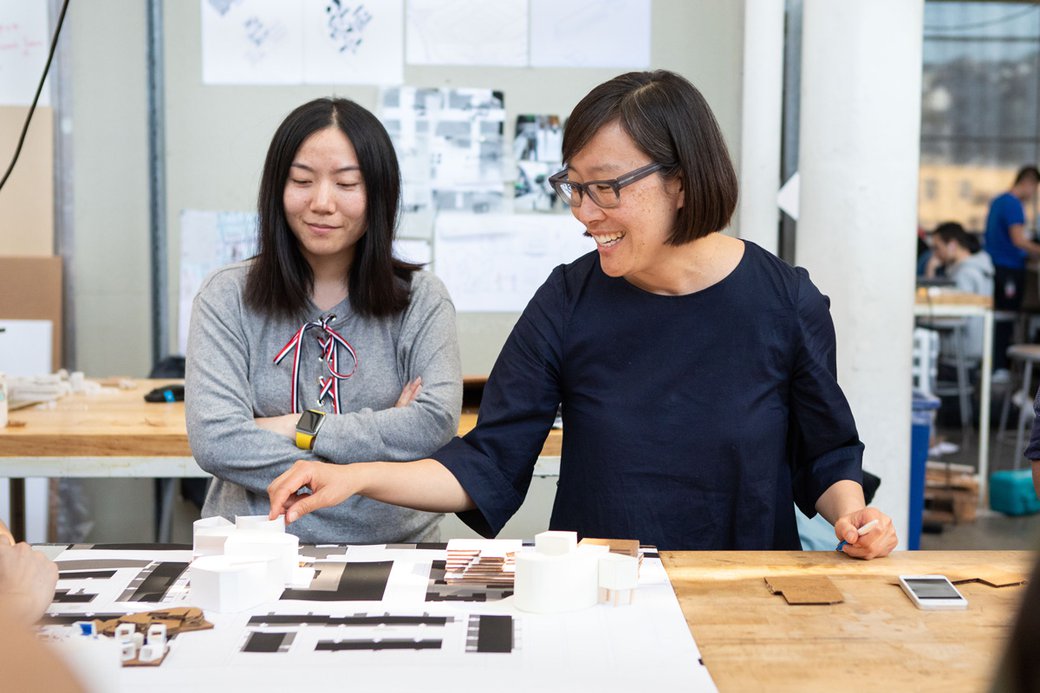
High-profile architecture and design educators
Our award-winning faculty drive the success of our discipline. As teachers, researchers, practitioners, and public intellectuals, we’re active in shaping important conversations around architecture and interior design. Our faculty believe that architecture and interior design are critical cultural practices that reflect values, impact lives, shape urban spaces, harness technological innovation for positive change, and envision other futures for an environmentally challenged world.
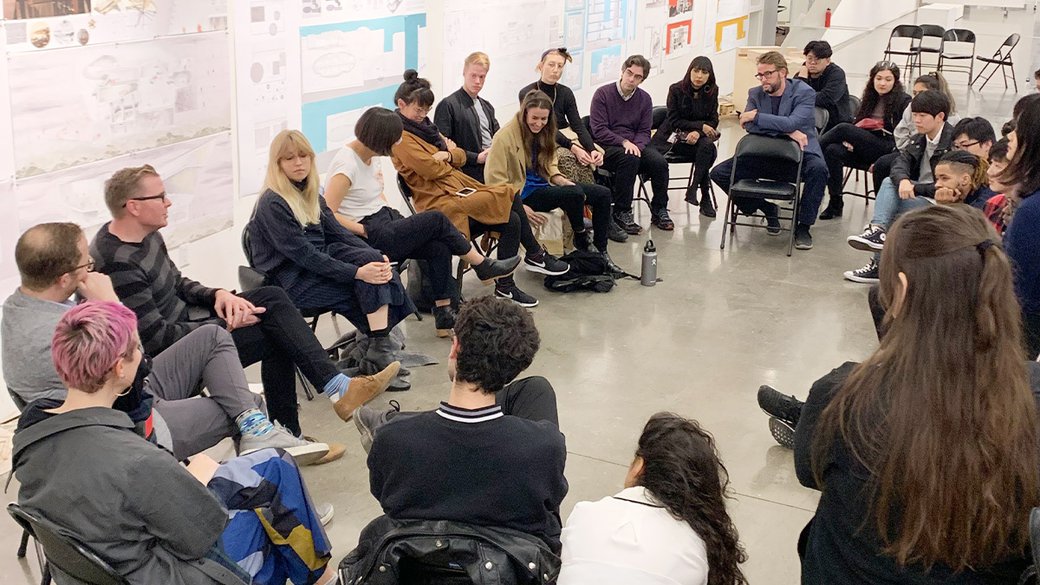
Robust public programming
Our national and international networks are amplified by our lecture series and symposia. Open to the public, our keynote lectures feature architects, designers, and theorists from the Bay Area and around the world. Recent guests include Wang Shu, Jeanne Gang, Eyal Weizman, Amanda Williams, Tatiana Bilbao, and Neyran Turan.
We also host numerous symposia each semester, inviting faculty and scholars from other architecture schools to join us in wrestling with controversial, provocative, and future-focused topics. Often directly tied to projects our students, faculty, and external partners advance in our architecture research labs, symposia are opportunities to learn from scientists, engineers, and other practitioners whose work intersects many different disciplines. Recent symposia topics include Reckoning: Monuments and Racial History, Domestic Affairs: Housing the Multitude, and Designing Material Innovation.
Explore Architecture
@cca_arch_div
Feb. 23, 2024
📣The Architecture Division Show and Tell Mixer is happening Thursday, February 29th from 11 to 1 PM PST in the Nave Presentation Space! Bring one piece of work you want to share. Anything from models to drawings and everything in between are all welcome. This is a great opportunity to meet and connect with students and faculty in the division and share your amazing work with everyone!
#ccarts #californiacollegeofthearts #ccaarchitecture #architecture #interiordesign #studio #sanfrancisco #artschool #imadethat #architectureschool #ccainteriordesign #architecturestudent #architecturestudentblog #Chimeramade #bayarea

Feb. 21, 2024
Hidden Oasis by Rocio Urbano (BARCH 2027) from last fall's Studio 1 course taught by Dominique Price (@as.space.is).
"Hidden Oasis, a hostel in the tropical forest that offers an immersive experience for visitors to discover. In studio 1 we explored the relationship between the landscape and the space, using the word “void” as a way of directing our design intentions. The main idea was to create a “clearing” in the forest that would only be visible from above, as it is also partially hidden through the circular wall of vines. However, some buildings do manage to peak through, encouraging visitors to come inside. I was also interested in the contrast of landscape on the inside vs the outside, as the natural foliage is randomly placed whereas the interior is man made, arranged in an organized manner dictating where the visitors can move around. Similarly, the ramps create a circular flow upwards that helps guide the visitors from one space to another, turning a regular hostel stay into an explorational journey." - Rocio Urbano
#ccarts #californiacollegeofthearts #ccaarchitecture #architecture #interiordesign #studio #sanfrancisco #artschool #imadethat #architectureschool #ccainteriordesign #architecturestudent #architecturestudentblog #Chimeramade #bayarea

Feb. 19, 2024
Please join us on this Thursday, February 22, for the second lecture in the Spring 2024 Design Action Lecture Series from CCA Architecture. David Gissen will outline a few key concepts from his new book, The Architecture of Disability: Buildings, Cities and Landscapes Beyond Access (University of Minnesota Press, 2023).
Disability critiques of architecture usually emphasize the need for modification and increased access, but The Architecture of Disability calls for a radical reorientation of this perspective by situating experiences of impairment as a new foundation for the built environment. With its provocative proposal for “the construction of disability,” this book fundamentally reconsiders how we conceive of and experience disability in our world. Copies of The Architecture of Disability will be available for purchase after the lecture.
David Gissen is an author and designer based in New York City. He is Professor of Architecture and Urban History at Parsons School of Design/The New School. In addition to The Architecture of Disability, he is the author of the books Subnature (2009) and Manhattan Atmospheres (2013).
Learn more and register for the event at the link in our bio.
#californiacollegeofthearts #ccainteriordesign #ccaarchitecture #architecture #interiordesign #architectureschool #architecturelecture #architecturelectureseries

Feb. 16, 2024
We are pleased to present this week’s Alumni Feature with Sam Datubo Higgwe, a 2021 graduate of CCA’s Master of Architecture program and founder of Let’s Design Studios (@lets.design.studios).
What was your favorite thing about being a student at CCA?
My time at CCA was profoundly transformative, marked by the unique blend of students from diverse design backgrounds—ranging from industrial to fashion design, and from business in design to animation.
This melting pot of creativity fostered deep connections with peers and professors, enriching my academic and personal growth. The architecture program stood out, challenging my preconceptions and expanding my view on the essence of being an unconventional architect. It pushed the boundaries of traditional architecture, inviting exploration into the artistry and craftsmanship defining the field today. Encouraged to defy the norm, I embraced the challenge, questioning and redefining what architecture meant to me.
What are you doing now, and how did CCA prepare you for your current role?
I currently work for Tesla creating architectural visualizations. This journey led to a significant personal evolution; I confidently embraced my identity as an archviz artist, no longer constrained by the need to fit within traditional architectural confines. This realization—that architecture is a broad spectrum allowing for extensive exploration beyond conventional limits—was liberating.
CCA’s environment was not just about learning the fundamentals but about breaking free from them, encouraging a journey of self-discovery and expansion beyond the expected.
Images:
1. Sam Datubo Higgwe, Photo: Lina Kudinar (MArch 2021)
2-4. Voronoi, 2022. With Marc Northstar (MArch 2021) and Eve Tobey (BArch 2021)
5-7. Sonic Vault, 2021. From Underworlds, an advanced studio with Jason Kelly Johnson
8-10. Myco-Pavilion, competition entry, 2023. With Aastha Singh, Jerome Tavé, and Kyle Lawson
#californiacollegeofthearts #ccaarchitecture #architecture #studio #sanfrancisco #artschool #imadethat #architectureschool #architecturefaculty #Chimeramade #bayarea #alumniprofile #architecturealumni #youngarchitects #architecture #architecturefuture
Students and faculty stories

Dezeen features 10 CCA architecture student projects




San Francisco's housing dynamics explored by CCA
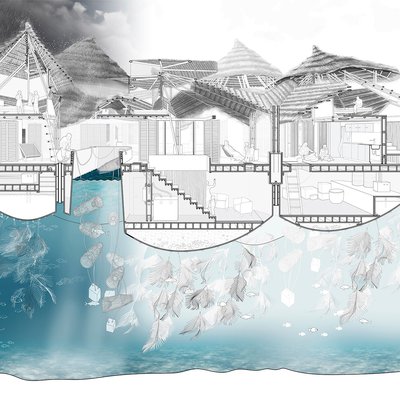
Undergraduate
Reimagine our cities and environments
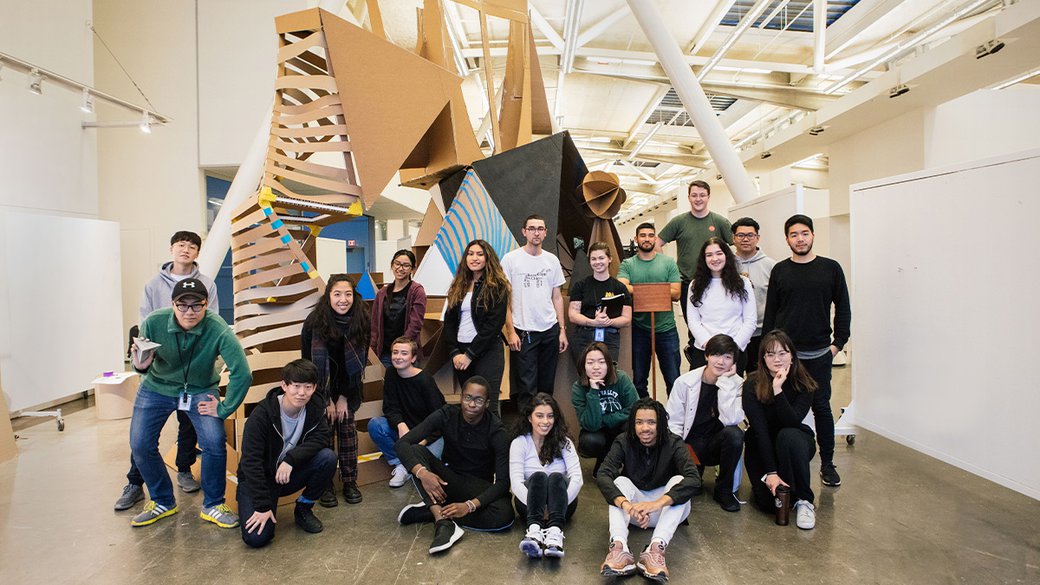
Create innovative work across disciplines
The five-year Bachelor of Architecture (BArch) program is NAAB-accredited and STEM-designated. With a focus on critical thinking and creative making, students learn how to be agents of change, leveraging their skills toward environmental, social, and political impact. Design studios emphasize conceptual rigor, engaged research, and material and formal experimentation, setting students up for success across a range of project scales.
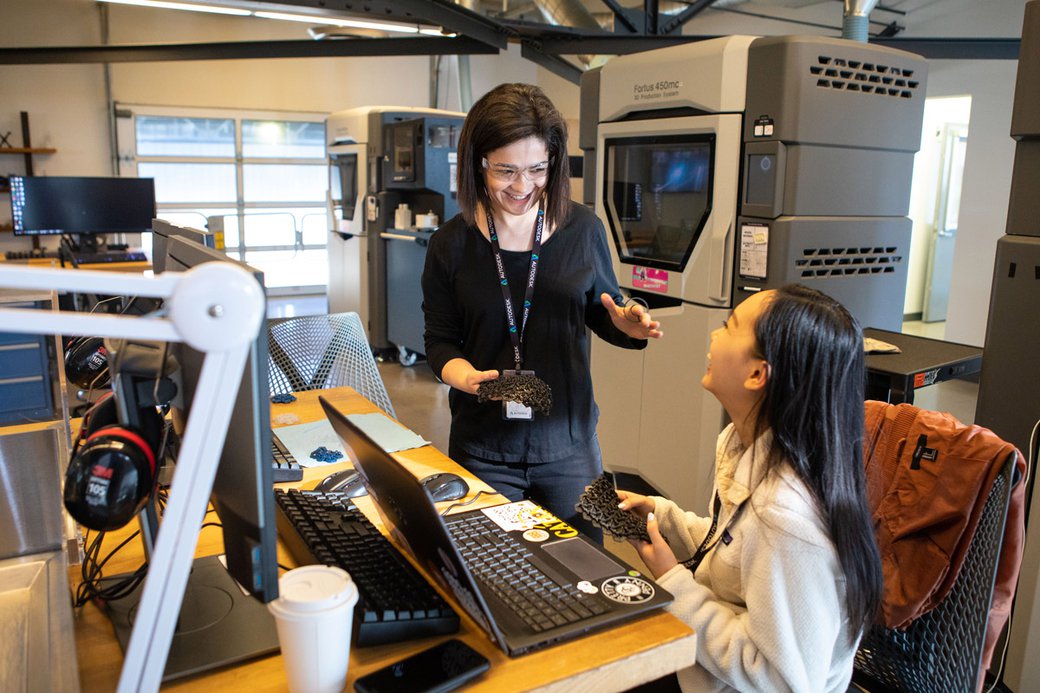
Our BFA in Interior Design, is a four-year accredited program with a focus on sustainable material practices and spatial innovation. Students learn to design for various human environments, including the home, workplace, and public sphere. Internships with prominent Bay Area architecture and interior design firms give students a first-hand look at the daily processes they’ll encounter throughout their careers.
Graduate
Architecture matters
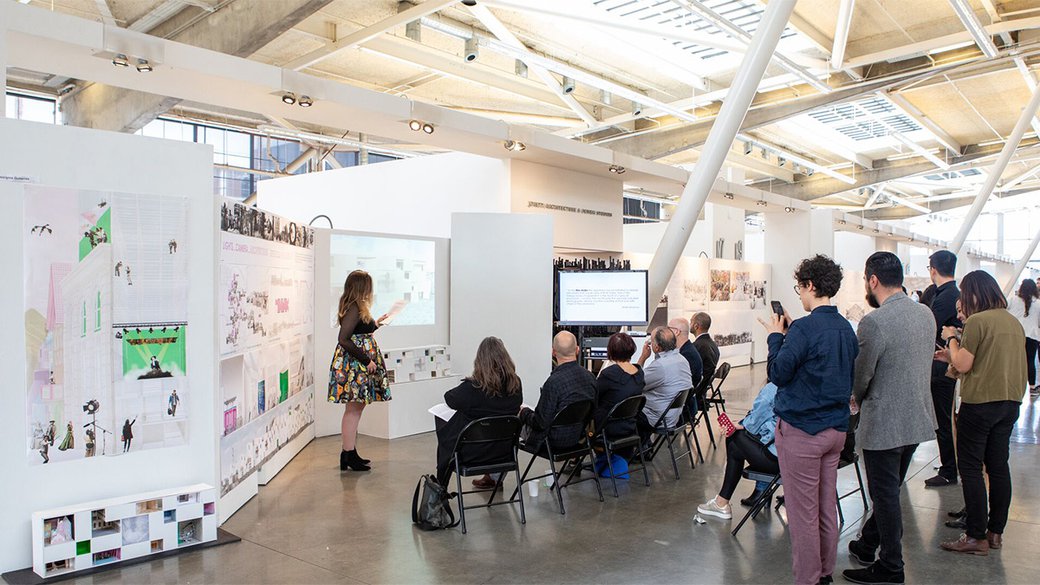
Connect architectural innovation with social impact
Our Master of Architecture (MArch) program champions innovation and experimentation in architectural design, preparing students to lead conversations and develop solutions around some of the world’s most pressing issues. NAAB-accredited and STEM-designated, the MArch program guides students through three years of advanced study, leveraging design, research, and material innovation to merge conceptual, historical, and physical contexts.

Our second STEM-designated program, the Master of Advanced Architectural Design (MAAD), is for early-to-mid-career professionals interested in collaborative and experimental design practices. Over the course of one intensive year, students focus on an independent research or design project through mentored study and a range of elective offerings in one of three areas associated with our research labs: Digital Craft, History Theory Experiments, or Urban Works.
Labs & Research
Engage with urgent issues
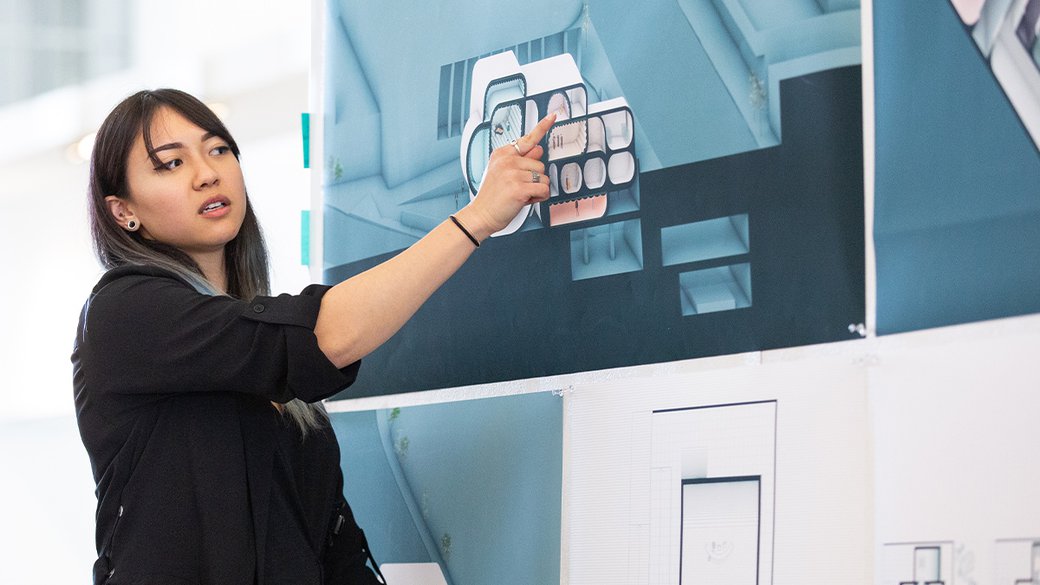
Instigate change
We believe architecture can imagine and create alternative futures, and we translate this belief into direct action. Our four research labs, which are formulated around faculty interests and expertise, present students with myriad project opportunities, such as developing solutions to regional issues brought on by climate change for the Resilient by Design Bay Area Challenge.
From gritty experiments with alternative materials to groundbreaking thinking about urban issues, these projects are often conceived and realized in collaboration with external partners. Recent collaborators include Autodesk, the City of San Francisco, Kreysler & Associates, and the Resilient by Design Bay Area Challenge.
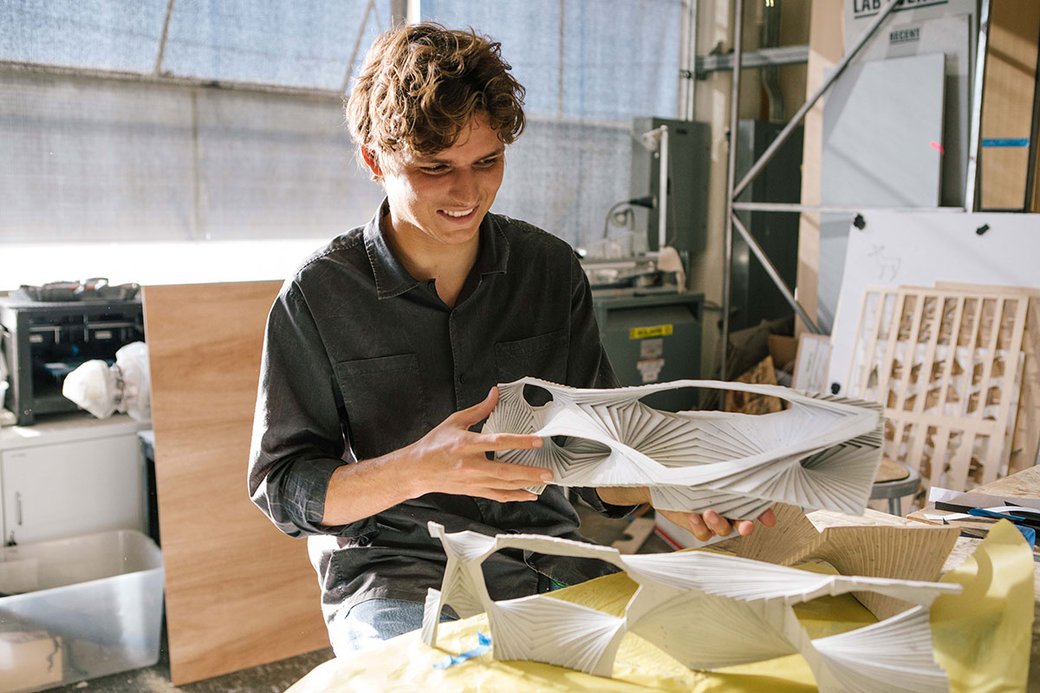
Digital Craft Lab
The Digital Craft Lab features experimental making through emerging technologies. Advanced computation, robotics, responsive environments, and rapid prototyping are motivations to reconsider how architecture is produced.
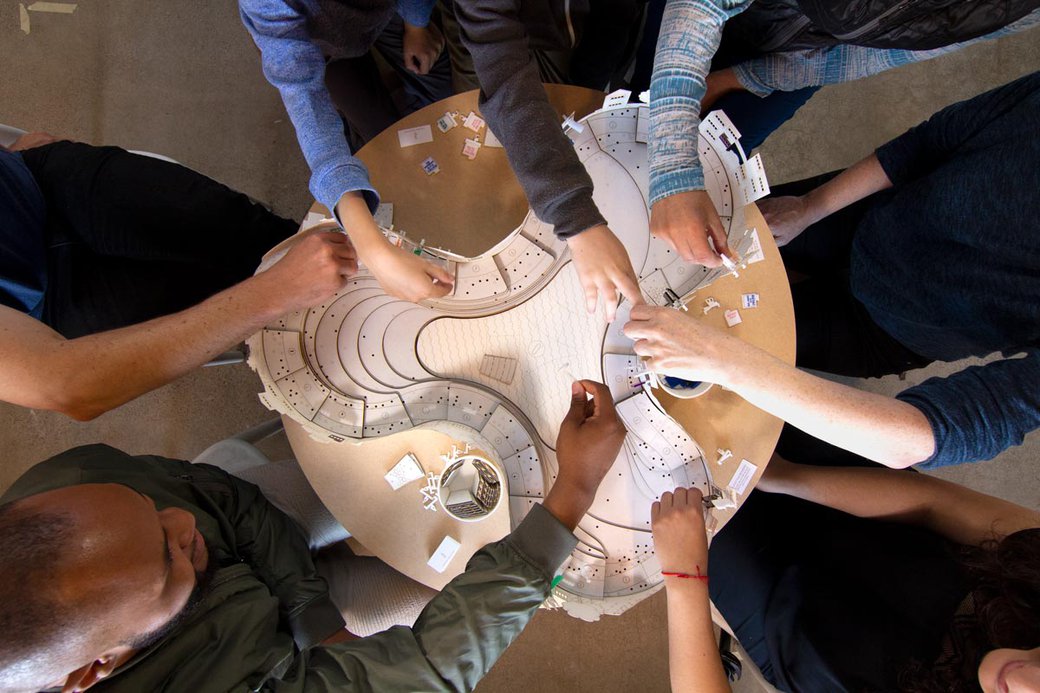
Experiments in Collective Living, Fall 2018
Urban Works Agency
The Urban Works Agency responds to the politics of the contemporary city. Equity, ecological vitality, and economic resilience are reimagined through urban and territory scaled analysis, narratives, and arguments.
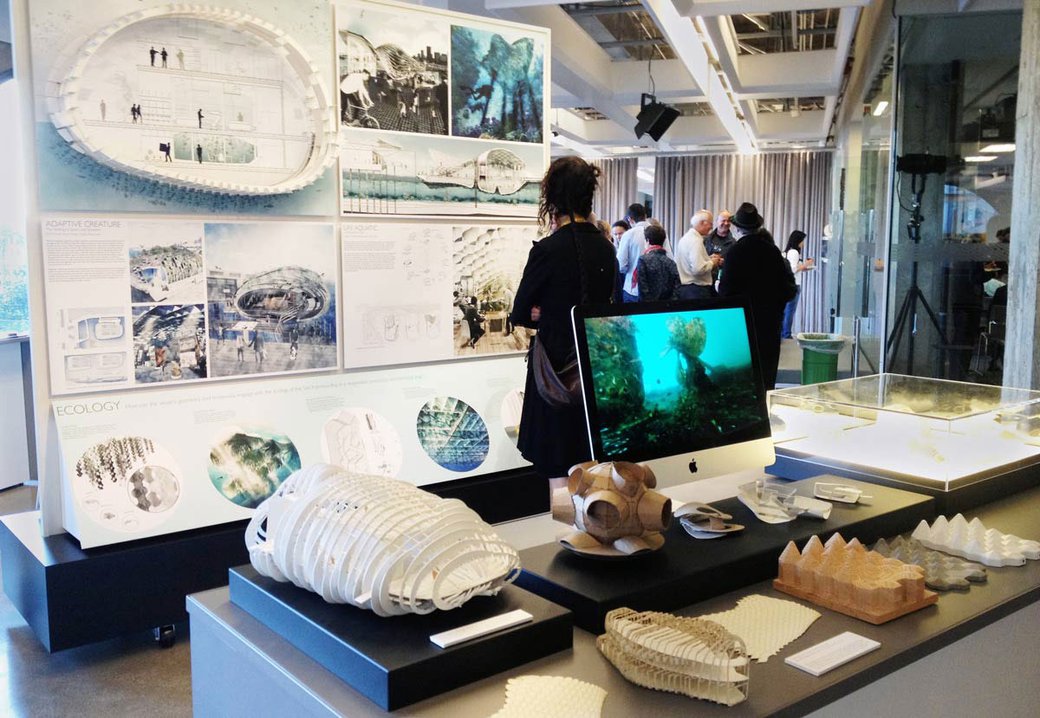
Architectural Ecologies Lab
The Architectural Ecologies Lab serves as a platform for collaborative research between designers, scientists, and manufacturers. This interdisciplinary setting provides the tools to address ecological challenges like sea level rise, habitat restoration, and climate change.

Black Lives Matter Teach-In: On Race, Architecture, and the City
History Theory Experiments
History Theory Experiments works to preserve and present the immaterial aspects of architectural heritage through the reconstruction of environments, immersive augmented reality, and cutting-edge conservation techniques.
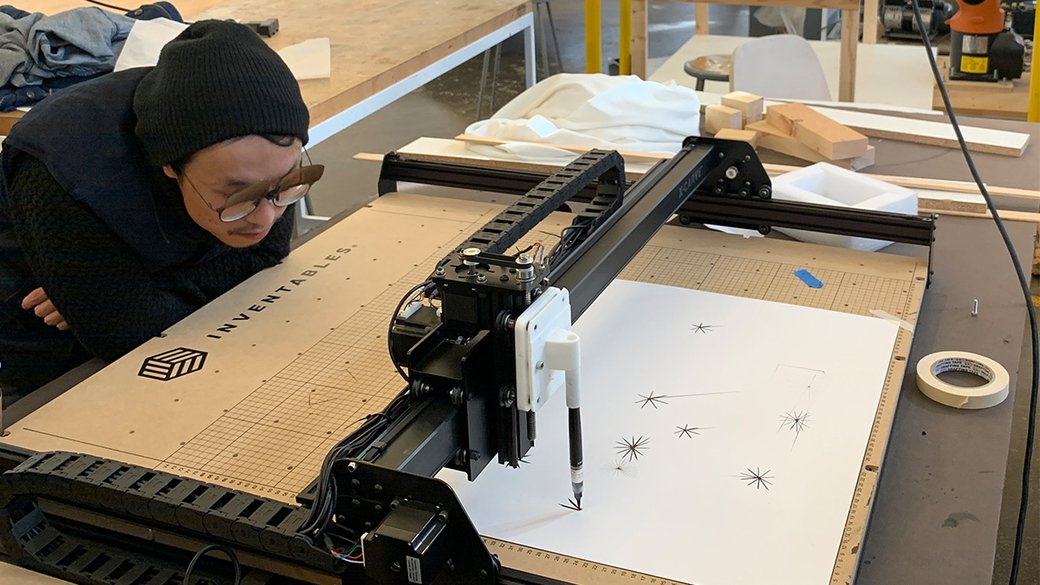
Advanced electives
Vertical electives are courses that integrate graduate and undergraduate architecture students as they learn the process of taking conceptual ideation to practical implementation; the objective of vertical electives is to deepen students’ understanding of and ability to create what’s possible when theory, practice, and experimentation converge. While electives vary from year to year, we’re particularly excited about these two:
- Mechanized Natures – Explore architectural attitudes toward machines and nature through drawing projects that engage processes of automation and ecological thinking.
- Urban Imaginaries – Reflect on "the urban imaginary" by examining how cities are defined through material forces, social acts, political directives, and market exchanges, as well as historically informed ideas about what defines "the city."

Pollintor Power Hub by Roxana and Javier Breceda from the "Bouyant Ecologies: Urban Ecotones at Islais Creek integrated studio, 2020.
Advanced and integrated studios
Our advanced studios, which undergraduates can take during their final two years, are either embedded within our research labs or framed around collaborations with external partners. Studios, like the ones featured below, focus on how architectural design can problem-solve for challenging environments and increasingly dense cities.
Buoyant Ecologies
In contrast to anthropocentric technologies of “resilience” motivated primarily by self-preservation, this evolving advanced studio series explores alternative strategies for human adaptation to ecological change that both depend on and support the health and diversity of nonhuman terrestrial and marine species.
Common Ground: Re-Making the Ground Floor
This advanced urban studio explores the role of social infrastructure in building a more just, inclusive, and thriving city. Students reimagine the ground floor of the city as a shared infrastructure in the service of the public good by imagining new configurations of our collective urban ground.
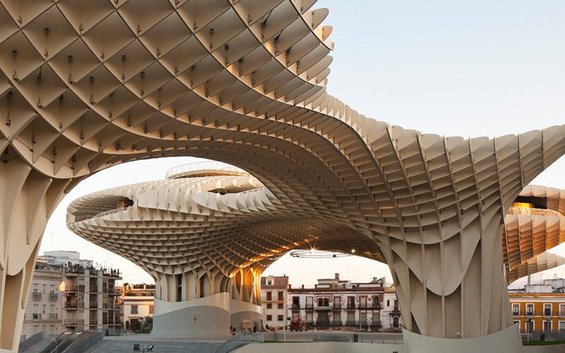
Metropol Parasol in Seville, Spain.
Travel studios
We encourage every undergraduate and graduate student to study abroad at least once. You’ll broaden your cultural influences, explore new environments, and meet other creative practitioners. Our most recent travel studios focused on the following themes:
- China | Picking Up Threads: Stitchlink 2020 – Explore the burgeoning southeastern region of China studying the work of several contemporary Chinese architects
- Mexico | Material Cultures in Mexico City & Oaxaca – The studio weaves together cultural research, material exploration, and design innovation to explore resonance between traditional craft practices and contemporary techniques of architectural design and production.
We’re here to answer your questions
We’re happy to share more information about our alumni, faculty, and the ambitious projects we’re pursuing in our four research labs.


Explore other disciplines at CCA
Get more details about your program of interest





